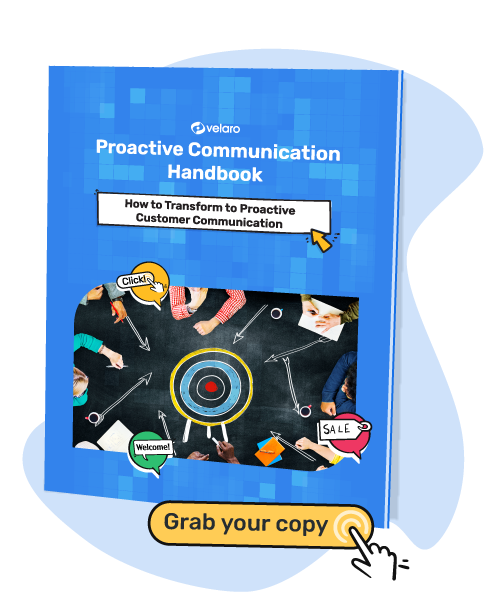Decision-making is fundamental for any business aiming to grow and stay relevant. Consider a company that has been experiencing slow growth and is facing increased competition. The leadership team decides to develop a new product after carefully considering market trends and customer feedback.
This move involves risk, as it requires shifting resources from tried-and-tested products to something entirely new. However, the decision pays off when the new product starts to address customer needs that had previously been ignored, leading to increased sales and a rejuvenated market presence.
This example highlights how crucial good decision-making is for a business. It allows companies to respond effectively to changing conditions, manage risks intelligently, and invest in areas likely to bring the highest returns. Good decisions help businesses improve their position and achieve long-term success.
In this article, we'll explore techniques and strategies for making well-informed choices that maintain competitiveness and ensure sustainable growth.
What is Strategic Decision-Making?
Decision-making in business refers to the act of determining the best path forward when faced with multiple possibilities. It requires evaluating the potential risks, benefits, and consequences of each choice, while considering factors such as resources, time constraints, and stakeholder interests, ultimately leading to the selection of the most advantageous option for the company.
Decision-making is a critical component of effective leadership and organizational success. By making well-informed, forward-looking decisions, organizations can navigate challenges, seize opportunities, and create sustainable value for themselves and their customers. Some key reasons why strategic decision-making is crucial:
- Defining Direction: Strategic decisions help organizations define their overall direction, vision, mission, and long-term goals. These decisions shape the organization's future path and ensure that all efforts are aligned with the desired outcomes.
- Adaptability: Making informed decisions enables businesses to adapt to changing market conditions, customer preferences, technological advancements, and regulatory changes.
- Risk Management: It involves weighing potential risks against benefits to navigate uncertainties effectively. This proactive approach helps organizations navigate uncertainties and adapt to changing circumstances.
- Resource Allocation: Proper decision-making ensures that resources (financial, human, technological, etc.) are optimized for maximum impact, aligning with the company's strategic goals.
- Competitive Advantage: Strategic decisions can help organizations identify and capitalize on opportunities, anticipate and mitigate threats, and develop unique competencies that differentiate them from competitors.
- Long-term Sustainability: Strategic decisions are focused on long-term sustainability and growth rather than short-term gains. They consider the organization's long-term viability, stakeholder interests, and societal impacts, ensuring that the organization remains relevant and successful over time.
Addressing the Consequences of Poor Decision-Making
Failing to use a structured approach to decision-making can have severe consequences for businesses, such as financial losses, low employee morale, and reduced market share. To navigate the complex business environment effectively, companies must rely on data-driven and methodical decision-making processes. Making decisions without established techniques can result in strategic mistakes and operational inefficiencies.
History is replete with examples of companies that have suffered the consequences of failing to employ structured decision-making processes. Blockbuster, once a video rental giant, ignored the emerging trend of digital streaming and online rentals, a decision that led to its downfall in the face of competitors like Netflix. Kodak, despite inventing the first digital camera, failed to pivot towards digital photography, resulting in a significant loss of market share and eventual bankruptcy. Nokia, a former leader in the mobile phone market, saw its dominance evaporate due to its reluctance to adopt smartphone technology and its slow response to competitors' innovations.
These cautionary stories highlight the vital role of embracing change, using data to inform strategic decisions, and the steep costs associated with neglecting structured decision-making approaches.

Exploring Key Decision-Making Models: Finding the Best Fit for Your Organization
Effective decision-making is crucial for management and leadership success. Choosing the right approach can lead to better outcomes, including increased productivity, strategic alignment, and overall organizational performance. To navigate complex problems and reach optimal solutions efficiently, it's essential to understand the various decision-making models available. This overview will introduce you to several key models:
1. Rational Decision-Making Model
How It Works: A step-by-step approach that uses logic and facts to choose the best decision out of all the possibilities.
Best Use Case: Clear problems and data-rich environments, such as project management, finance, or strategic planning when time and resources permit.
2. The Intuitive Model
How It Works: Relies on instincts and experience for quick decisions without much data.
Best Use Case: Fast-paced, high-pressure situations requiring immediate decisions, like emergency response or sales negotiations.
3. Bounded Rationality Model
How It Works: Adjusts decision-making to work with what people can realistically do, aiming for good enough rather than perfect solutions.
Best Use Case: Scenarios with time or information constraints, useful for strategic decision-making in management or complex problem-solving with limited resources.

4. The Incremental Model
How It Works: Makes small, gradual adjustments to decisions based on feedback.
Best Use Case: Unpredictable environments, policymaking, developing new products/services with continuous improvement, or adapting to changing market conditions.
5. The Pros and Cons Model (Ben Franklin Model)
How It Works: Lists pros and cons to directly compare alternatives.
Best Use Case: Simple or personal decisions where outcomes are predictable; useful for team consensus or when comparing a limited number of alternatives.
6. Group Decision Making
How It Works: Uses collective input for a more informed decision-making process.
Best Use Case: Decisions affecting broad stakeholders or complex issues, ideal for organizational strategic planning, brainstorming sessions, or when diverse perspectives are needed.
Steps Of Decision-Making
The process of making decisions involves a series of clear steps that can help you assess situations, consider various solutions, and choose the best course of action. Here we outline the fundamental steps of decision-making within a business context. Understanding these steps can help you make informed choices that support your strategic goals and enhance your operational efficiency.
- Step 1- Establish a goal. Setting a clear objective is the foundation of the decision-making process. Begin by defining what you want to achieve. This goal should be specific, measurable, actionable, relevant, and time-bound (SMART). Whether it's to increase market share, improve customer satisfaction, or launch a new product, knowing your target will direct all subsequent actions and decisions.
- Step 2- Collect related information. Gather information relevant to your decision. This includes data on market trends, customer feedback, financial reports, and any other relevant metrics. Collection of information could also involve qualitative data, such as employee input or expert opinions. Ensure you explore a wide range of sources to prevent any gaps in your understanding.
- Step 3- Measure your options. With the information at hand, identify the various paths you can take. Weigh the pros and cons of each option. Consider using decision-making tools like SWOT analysis (Strengths, Weaknesses, Opportunities, Threats) or other frameworks to quantify and compare the implications of each choice.
- Step 4- Make your choice. After analyzing the different avenues, it’s time to choose the one that aligns most closely with your established goal and carries a beneficial balance of risk and reward. Trust in the groundwork you’ve laid and the data you’ve gathered to make an informed choice.
- Step 5- Assess your decision. Lastly, evaluate the outcome of your decision against the goal you initially set. This step is vital to understanding the effectiveness of your choice and the decision-making process. Consider what you can learn from the outcomes and how this knowledge can refine your approach for future decisions. Continuous assessment can lead to improved decision-making skills and greater success in achieving goals.
Agile Decision-Making for Small Teams: Solving Complex Problems with Limited Resources
Small teams often face unique challenges when it comes to making complex decisions, especially with limited resources and team members. Time-consuming decision-making sessions can be burdensome, and maintaining focus can be difficult. However, by employing agile and tailored strategies based on the principles of effective decision-making, small teams can navigate these challenges and make high-impact decisions. Below are some proven tactics that small teams can utilize to solve problems and make complex decisions efficiently:
Empower Team Members
Small teams can benefit greatly from empowering each member with decision-making authority relevant to their expertise. This reduces bottlenecks and speeds up the innovation process as team members can act and react without waiting for approvals.
Frequent, Short Meetings
Adopt a routine of quick, regular meetings (like daily stand-ups) to discuss progress, challenges, and immediate next steps. This keeps the team aligned and allows for rapid adjustment of strategies based on the latest developments.
Lean on Cross-Functionality
In small teams, members often wear multiple hats. Leverage this by encouraging a culture of learning and flexibility where team members are trained or briefed across different functional areas, enhancing adaptability and comprehensive understanding.
Utilize Lightweight Agile Practices
Implement agile methodologies that fit the size and scope of the team. For instance, use Kanban boards for visual project management and to keep track of tasks, progress, and priorities without the overhead of more complex tools.

Build a Feedback-Rich Environment
Establish direct lines of communication with customers and stakeholders to gather continuous feedback. This can be done through simple surveys, direct interactions, or beta testing with early adopters. Feedback should directly influence decision-making and project adjustments.
Promote Open Communication and Debate
Encourage a culture where team members feel safe to express dissenting opinions or propose alternative ideas. Small teams can benefit from these discussions without the risk of losing personal connections or respect among members.
Set Clear Roles and Responsibilities
In small teams, clearly assigning responsibilities is essential. This prevents duplication of effort and ensures all tasks are handled. As roles may change, it's important to keep the distribution of responsibilities up to date and well-defined.
Decision Logging and Review
Keep a log of decisions made, including the rationale behind each decision. Regularly review these decisions to learn from past actions, understand their outcomes, and refine decision-making processes.
These strategies are designed to be straightforward and practical, minimizing the administrative overhead while maximizing efficiency and effectiveness in decision-making. They help small teams remain agile, responsive, and innovative, which is crucial in rapidly changing environments.
AI’s Role in Decision-Making
The integration of AI into decision-making processes is becoming increasingly crucial for businesses worldwide. While AI has immense potential, only 7% of companies currently utilize it for major strategic operations like crafting company strategies or financial planning, highlighting a significant opportunity for growth.
CEOs recognize this shift, with over 50% already using generative AI to enhance their decision-making processes. Additionally, 75% of business leaders predict that mastering advanced generative AI technologies will become the key to competitive differentiation. As this technological frontier expands, enterprises that prioritize and effectively integrate AI into their strategic planning process will gain significant advantages.
The future of competitive business will be shaped not only by the adoption of new technologies but also by how these innovations are integrated to drive informed and strategic decisions. AI's impact on decision-making is already evident and will continue to grow in the business landscape.
Shaping Success: The Essence of Strategic Decision-Making
Businesses that excel at making well-informed decisions put themselves in a stronger position to achieve their goals and find lasting success. By thoughtfully choosing and applying the right decision-making models for each unique situation, you can help your organization overcome obstacles and reach the objectives you're striving for.
This is particularly important for smaller teams, who can efficiently make significant decisions by using agile methods, fostering open dialogue, and establishing well-defined roles.
As technology advances, integrating AI into decision-making processes will become increasingly important for companies looking to stay competitive. Ultimately, by adopting a systematic, information-driven approach to decision-making, businesses can set themselves up to thrive and prosper in the long run.






